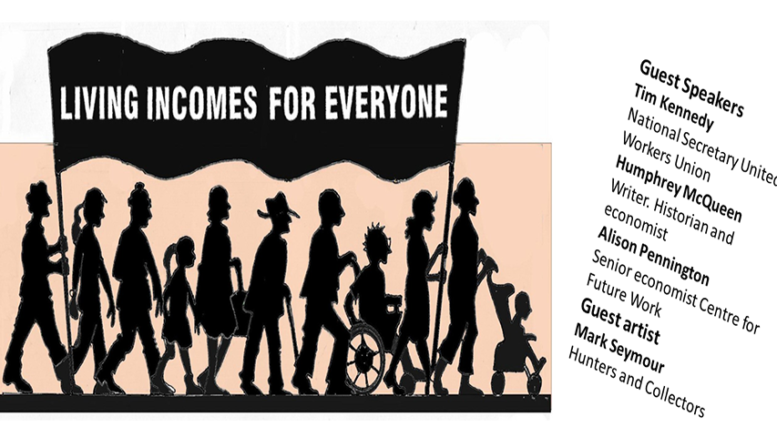Living Incomes For Everyone (LIFE) had its national digital launch on Tuesday 21 July. Thousands took part. Such a gathering has not taken place for a very long time, which is a good indicator of a feeling for change within Australian society. The purpose of LIFE is not to act as advocate. It is to build a new movement from the ground up, to empower citizens to be a force within their communities. The Pen is proud to support this initiative. The recording of the event is shown here in full. Viewers interested in more are encouraged to go to the Facebook link.
Video from Living Incomes for Everyone


I am a retired academic in astrophysics who probably has too much time on my hands.
I apologise for troubling you but I have been interested in the advantages of a universal basic income and its relationship to MMT. My main question is whether the implementation
method I describe below has been already suggested.
I am a strong believer in the concept of a universal basic income.
One of the major problems with the UBI is its apparent extra cost .
I am proposing a scheme that is more of a negative income tax that can
be implemented where the only extra cost is to cover everyone who is not
working but is not receiving social benefits.
On a weekly (or fortnightly) basis, every employer sends to the Australian
Taxation Office the total wage to be paid to that employee. The ATO notes the
total wage for that week and if necessary it supplements it to reach a standard wage.
It then sends the total wage to the employee. Its virtue is that it automatically allows
for casual workers with multiple employers and for salaried workers that do not
work on an hourly rate.
It is easily extended to people with incomes from dividends and other irregular
sources. They would receive the standard wage for most of the year and and their
entitlement would be sorted out at at taxation time.
Farmers and tradesmen would have a registered entity that would pay them a regular
wage. After all many tradesmen and farmers have more than one person working together.
The entity would receive any income and be subject to income tax on earnings and
be responsible for any deductions. If you employ a plumber you would pay the entity
via the ATO and the plumber’s business would pay the plumber and other employees.
A major advantage is the removal of most of the financial stress currently
experienced by most low-paid workers. Furthermore they would be in
control of their own social service. Although there would be major changes to the
social service it will be able to concentrate on the disabled and those with special needs.
If appropriate they could have their the standard wage at a higher level in order to provide extra
financial benefits.
It implementation is relatively financially neutral in that full time workers will have the same income as before and employer wage costs will be unchanged. The only additional payout is
to everyone who is not employed. The advantage for the government is that it provides
important real time statistics and provides basic data that can help eliminate fraud and much
of the black market .
Clearly, it will impact on the social service and other services such as compulsory superannuation.
Note that from a privacy viewpoint it does not require more individual information than
that already available to the ATO.
Clearly the standard wage should be higher that the poverty level and the minimum wage must
be even higher. Obviously there must be laws make all income payments to be made via the ATO.
Finally I suggest that every citizen is enrolled at birth and their standard wage would ramp up until
they are an adult. This income would be paid to their mother. At some age , say, eighteen they could apply to have it paid to their own account. This requirement is to assist women who are victims of family violence.
A simple way to provide the extra funds would be to replace the current GST by a percentage tax on all incomes over a prescribed level which implemented by the ATO. I don’t know what level this would be but I suspect that it would have to be in the range of 10% to 20%. If it was implemented now, it would make a huge contribution to the recovery from the recession. The money would go to the best people to spend it with a rapid turnover.
My desire is to have a financial system based on people and not one based on jobs.